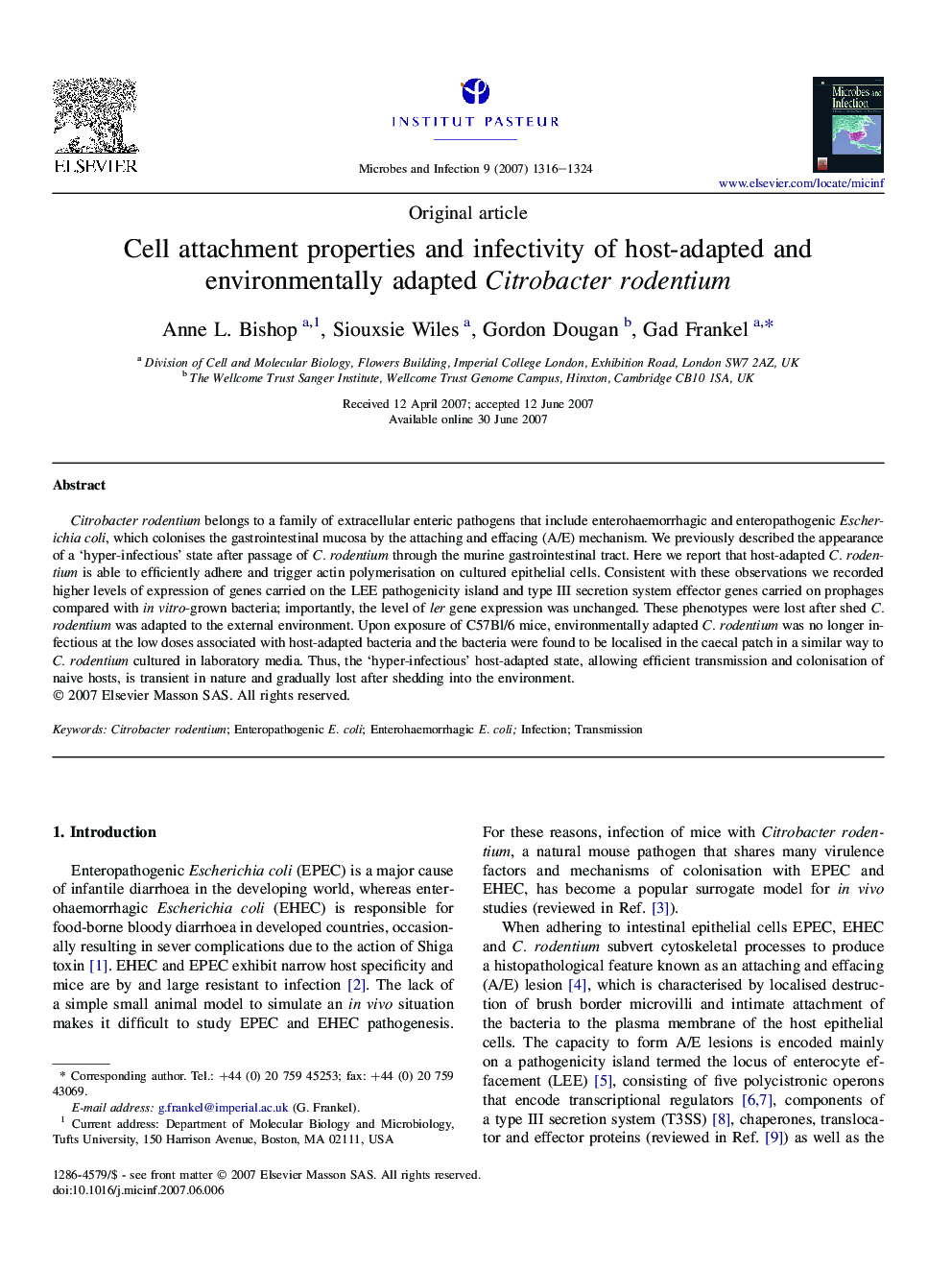| Article ID | Journal | Published Year | Pages | File Type |
|---|---|---|---|---|
| 3415320 | Microbes and Infection | 2007 | 9 Pages |
Citrobacter rodentium belongs to a family of extracellular enteric pathogens that include enterohaemorrhagic and enteropathogenic Escherichia coli, which colonises the gastrointestinal mucosa by the attaching and effacing (A/E) mechanism. We previously described the appearance of a ‘hyper-infectious’ state after passage of C. rodentium through the murine gastrointestinal tract. Here we report that host-adapted C. rodentium is able to efficiently adhere and trigger actin polymerisation on cultured epithelial cells. Consistent with these observations we recorded higher levels of expression of genes carried on the LEE pathogenicity island and type III secretion system effector genes carried on prophages compared with in vitro-grown bacteria; importantly, the level of ler gene expression was unchanged. These phenotypes were lost after shed C. rodentium was adapted to the external environment. Upon exposure of C57Bl/6 mice, environmentally adapted C. rodentium was no longer infectious at the low doses associated with host-adapted bacteria and the bacteria were found to be localised in the caecal patch in a similar way to C. rodentium cultured in laboratory media. Thus, the ‘hyper-infectious’ host-adapted state, allowing efficient transmission and colonisation of naive hosts, is transient in nature and gradually lost after shedding into the environment.
